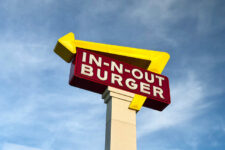
Intuition might suggest that it doesn’t matter if you switch or not; you might think the odds are 50/50. However, the puzzle’s solution, which is quite counterintuitive, is that you always increase your chances of winning the car if you switch to the other door. Here’s a simple breakdown of why:
- When you make your initial choice, there’s a 1/3 chance you’ve chosen the car, and a 2/3 chance you’ve chosen a goat.
- If you’ve initially chosen a goat (which happens 2/3 of the time), the host’s action of opening another door with a goat behind it doesn’t change the fact that the car is behind the other door. So, by switching, you win.
- If you initially chose the car (which happens 1/3 of the time), switching will make you lose.
Therefore, by always switching, you have a 2/3 chance of winning the car, compared to a 1/3 chance if you stick with your initial choice.
When the Monty Hall problem was first presented to a wider audience by Marilyn vos Savant in her Parade magazine column, the counterintuitive solution sparked an uproar. Over a thousand readers, including many with PhDs, wrote in to insist that vos Savant’s recommendation to switch doors—and the mathematical proof showing this strategy improves your chances of winning from 1/3 to 2/3—was wrong.








